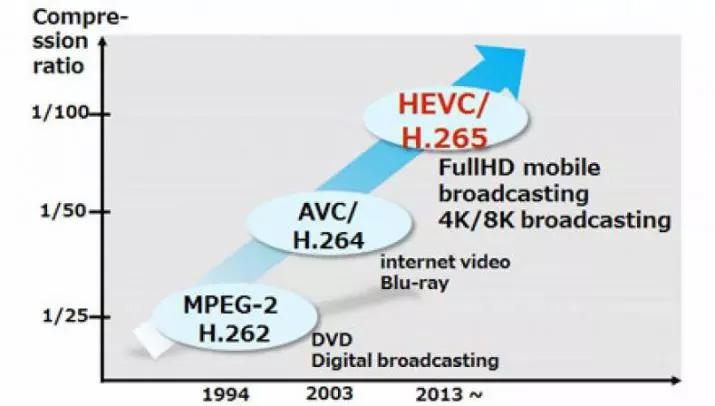Streaming video platforms like Netflix, HBO Max, disneyplus Among others, they have become, on their own merits, the most comfortable way to access all kinds of content without having to leave the house or resort to torrent downloads. However, to enjoy the best possible quality from a computer, we cannot use any browser.
The most widely used video transmission codec since YouTube hit the market is H.264, a codec that, as the years have gone by, has evolved to the current H.265. The next version of H.266 will be the next generation of this codec, although its widespread implementation is still some way off.
The main difference between the H.264 and H.265 codec is the bandwidth necessary to transmit the content, the latter being much more efficient in this sense since it occupies less than half, making video transmissions via the Internet much more more fluid and we can allow the best possible quality.
In addition, the H.265 codec (also known as HEVC) allows quality to be maintained by consuming less bandwidth so that this can be increased to offer higher quality using less than half the bandwidth that will be used with the H.264 codec.
Most smartphone manufacturers are taking advantage of the advantages in terms of compression quality to implement it in the video recordings they make, since it allows the quality of the recorded videos to be maintained, considerably reducing the space they occupy on the device.
Browsers that support H.265
If we look at the browser market with the largest market share, we find ourselves, in order from highest to lowest share, with Chrome, Safari and Edge. While Safari and Edge implemented support for this codec over a year ago. However, Chrome, Google’s browser, did not implement support for this codec until late last year.

At the moment, Firefox still does not offer support for this codec, so it still uses the H.264 codec. This does not mean that the quality of the videos available on streaming video platforms is much lower than what we can get with the browsers that do offer support, but rather that they simply take up more bandwidth and if our connection is not very fast, the playback quality may be affected.
What video codecs do streaming video platforms use?
In addition to knowing the compatibility of our browsers with the most popular codecs, it is important to know which ones are used by the different streaming video platforms.
-
Netflix, for example, uses the H.264, H.265, AV1 and VP9 (developed by Google) codecs depending on the device where the content is being played. VP9, offers a higher compression rate than H.264 however, it does not come close to the levels of H.265.
-
HBO Max continues to rely on the H.264 codec, which is why it does not offer the possibility of enjoying its content in 4K resolution, since the necessary bandwidth would be gigantic and its servers could not support it.
-
Disney+, for its part, uses a codec similar to HEVC, called QDH1, so if we want to enjoy the available content, we must have a browser compatible with H.265.
-
Amazon Prime Video was an early adopter of the HEVC codec.














